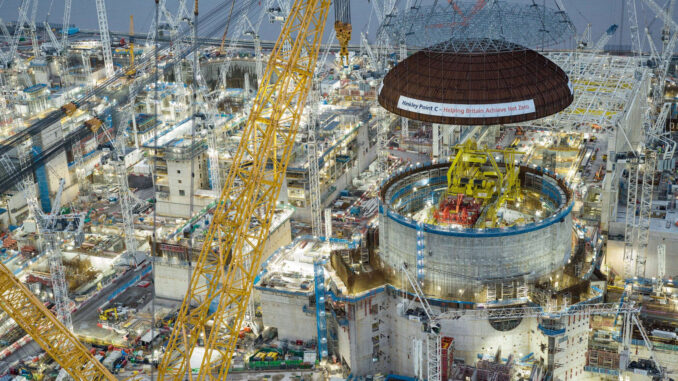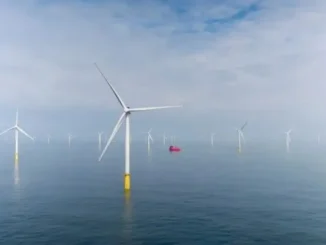
Britain is to build a new nuclear power station with the capacity to power as many as six million homes under plans to boost energy security and hit net zero targets.
Claire Coutinho, the Energy Secretary, heralded the plans as “the biggest expansion in nuclear power for 70 years” as she set out a raft of other measures in the Government’s long-awaited Nuclear Roadmap.
Plans for a new full-scale nuclear power plant supplement the two already under development: Hinkley Point C, which is under construction in Somerset; and Sizewell C, planned for Suffolk.
The new station would be similar in size to these existing projects, with plans for several more plants to follow before 2050.
Ms Coutinho’s roadmap sets a target of 24 gigawatts (Gw) of nuclear power capacity by 2050. This equates to seven nuclear power stations the size of Hinkley Point C coming online by the middle of the century.
The Energy Secretary said a nuclear revival was essential to cut greenhouse gas emissions and boost energy security, especially after the crisis in gas supplies that followed Russia’s invasion of Ukraine.
She said: “Strengthening our energy security means that Britain will never again be held to ransom over energy by tyrants like Vladimir Putin. British nuclear, as one of the most reliable, low-carbon sources of energy around, will provide that security.”

She was backed by Prime Minister, Rishi Sunak, who said: “Nuclear is the perfect antidote to the energy challenges facing Britain – it’s green, cheaper in the long term and will ensure the UK’s energy security for the long term.
“This is the next step in our commitment to nuclear power, which puts us on course to achieve net zero by 2050 in a measured and sustainable way.”
Labour, which also supports nuclear expansion, criticised the government for what it claimed was foot-dragging.
A Labour spokesman pointed out that Ed Miliband had approved 10 potential nuclear power station sites when he was energy secretary from 2008-2010, adding: “The Conservatives’ record on nuclear power is a disgrace – 14 years in power and not one new plant opened, despite inheriting 10 approved sites.
“What has been announced today is yet more warm words, hot air and re-announcements.”
If the roadmap is followed, the amount of electricity generated by nuclear power will rise more than fivefold by the middle of the century. Capacity would also be nearly double the historic peak of 12.7Gw achieved in 1995.
No site for the planned new station has yet been chosen but candidates include Anglesey in north Wales, Bradwell in Essex, and Hartlepool where previous nuclear power stations have been built.
As well as new full-scale reactors, Ms Coutinho suggested new capacity would also come from smaller “modular reactors”, most likely on industrial sites around the UK. These are cutting edge, factory-made rectors that are smaller and cheaper than facilities such as Hinkley.
While the technology has yet to be deployed in the real world, it holds much promise and the Government has been running an official process to support the creation of the first “mini-nuke” in Britain. National champion Rolls-Royce is among those in the running.
Tom Greatrex, chief executive of the Nuclear Industry Association, welcomed the UK roadmap and the potential deployment of small modular reactors.
He said: “We will need both large and small nuclear at scale and at pace for our energy security and net zero future.”
Ms Coutinho’s roadmap will be greeted with caution by an industry, which has endured a 20-year rollercoaster ride of promises, about turns and delays from all governments.
In its 2003 Energy White Paper, Tony Blair’s Labor government said the economics and waste problems of nuclear power made it an “unattractive option”. Three years later, the Government changed its mind and announced plans for up to 10 new plants.
The 2008 financial crisis saw seven of these schemes dropped, leaving only Hinkley Point C in the running.
The Conservative-Lib Dem coalition that took over in 2010 also backed Hinkley but Japan’s 2011 Fukushima disaster, when a tidal wave overwhelmed a nuclear power station, delayed approval. It meant Hinkley Point C did not get final sign-off till 2016.
Sizewell C, planned near Aldeburgh in Suffolk, was approved only last year and still awaits a final investment decision.
The Chinese government, by contrast, has approved 10 nuclear power projects this year alone in addition to the 10 approved last year, according to World Nuclear News.



